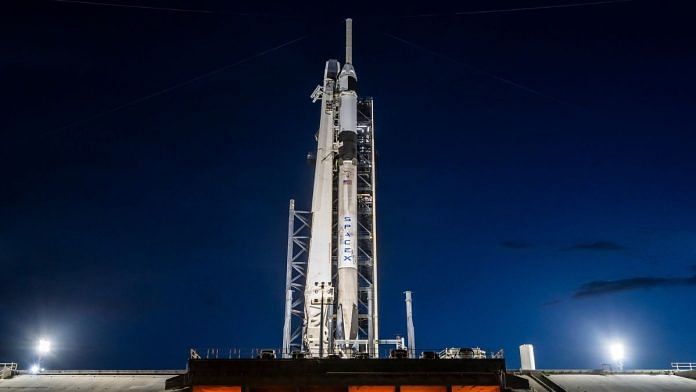New Delhi: A propellant leak in SpaceX’s Falcon 9 rocket could further delay the Axiom-4 launch, carrying India’s Shubhanshu Shukla to the International Space Station, at least by “another few days”, Indian Space Research Organisation (ISRO) scientists said.
On Wednesday, SpaceX announced that the Axiom-4 launch had been put on hold following a “LOx (liquid oxygen) leak identified during post static fire booster inspections”. This is the fourth time the launch date has been changed.
A senior ISRO scientist told ThePrint, “To usually fix a LOx so close to the launch, a rocket needs to be removed from the launch and checked.”
He added, “But this is a different technology from what we are used to back home, so commenting on the nitty-gritties would not be possible.”
The scientist, who is in the US for the Ax-4 launch, said it could take a few days to announce a new launch date, depending on the outcome of the final rounds of safety checks.
In a post on X, the official account of SpaceX said, “Standing down from tomorrow’s Falcon 9 launch of Ax-4 to the Space Station to allow additional time for SpaceX teams to repair the LOx leak identified during post static fire booster inspections. Once complete – and pending Range availability – we will share a new launch date.”
Initially scheduled for 29 May, the launch was first rescheduled for 8 June and then again for 10 June. However, hours before the launch, SpaceX and NASA pushed it to 11 June, citing “bad weather”.
LOx leak detected on 8 June
Liquid oxygen (LOx) is one of the two propellants used by SpaceX for its Falcon 9 engines—Merlin. The other is a rocket-grade kerosene, or RP-1.
Static fires are standard pre launch tests in which a rocket’s engines are briefly ignited while the booster is anchored to the pad. This test validates the engine’s ignition and performance, tests the propellant flow, checks the engine pressure, and identifies any other anomalies.
It was during this final stage test that the leak was detected. In a modern engine like the one used in Falcon 9, this process of detecting leaks is done through oxygen sensors and thermal cameras.
ISRO officials told ThePrint that the first propellant leak was detected on 8 June.
SpaceX vice-president Bill Gerstenmaier discussed the details of the leak during a launch readiness press conference Tuesday, but insisted that the issue was under control and was unlikely to delay the launch.
“We are installing a purge that will essentially mitigate the leak,” he told reporters at the time.
(Edited by Sanya Mathur)






